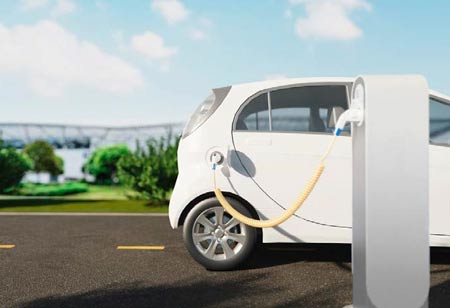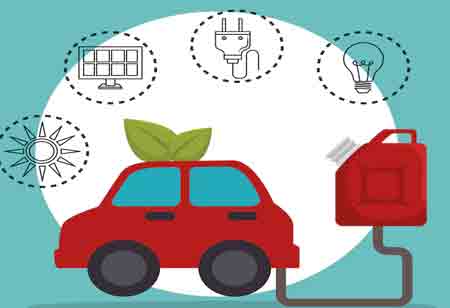Thank you for Subscribing to Energy Business Review Weekly Brief
Platform Strategies Driving the EV Charging Revolution
The electric vehicle charging ecosystem is evolving, integrating mobility and energy management to create smarter, sustainable cities through advanced platforms and technologies.

By
Energy Business Review | Tuesday, September 02, 2025
Stay ahead of the industry with exclusive feature stories on the top companies, expert insights and the latest news delivered straight to your inbox. Subscribe today.
The burgeoning energy and mobility network is fundamentally transforming urban landscapes, with the electric vehicle (EV) charging ecosystem serving as its linchpin—an intricate amalgamation of hardware, software, and sophisticated management systems. The accelerated proliferation of electric mobility has stimulated the formulation of robust platform strategies, thereby facilitating a cohesive and integrated experience for drivers, concurrently unveiling unprecedented prospects for optimizing urban energy consumption and bolstering grid resilience. This paradigmatic shift transcends the mere provision of power to vehicles; it fundamentally entails the architectural design of a future wherein transportation and energy are inextricably interwoven, thereby cultivating more intelligent and sustainable urban environments.
Platform-Centric Approach to EV Charging
The foundation of this burgeoning ecosystem is built upon a platform-centric approach. This model orchestrates the complex interactions between charging hardware, network operators, service providers, and end-users. A key tenet of this strategy is hardware agnosticism, which promotes interoperability and allows for a diverse range of charging stations, from alternating current (AC) units for overnight charging to high-power direct current (DC) fast chargers for rapid replenishment, to be integrated into a unified network. This flexibility is crucial for catering to the varied needs of a growing EV driver base and for future-proofing the infrastructure against technological advancements.
Cloud-Based Solutions for Enhanced User Experience
At the core of these platforms is a sophisticated, cloud-based software layer that serves as the central nervous system of the entire charging network. This software is responsible for a multitude of critical functions, including real-time monitoring of charging station health, remote diagnostics, and proactive maintenance, all of which are essential for ensuring high uptime and reliability. For the end-user, this software-driven approach translates into a frictionless experience, with intuitive mobile applications that facilitate charger discovery, reservation, and secure payment processing. Furthermore, these platforms are powerful data engines, capturing and analyzing a wealth of information on charging patterns, energy consumption, and station utilization. These insights are invaluable for network operators to optimize their operations and for urban planners to make data-informed decisions about future infrastructure deployment.
The influence of these platform strategies extends far beyond the realm of simple energy replenishment, deeply impacting the fabric of urban mobility. A primary objective is the creation of a seamless and predictable charging experience. The ultimate goal is a "plug-and-charge" paradigm where the vehicle and the charger communicate automatically for authentication and billing, eliminating the need for manual intervention. This level of convenience is paramount for encouraging widespread EV adoption.
EV charging is increasingly being woven into the broader tapestry of Mobility as a Service (MaaS) platforms. This integration allows for a holistic urban transportation experience, where a single application can be used to plan a journey that might involve an electric car, public transit, and a shared e-scooter, with charging needs seamlessly factored into the itinerary. This convergence is breaking down the silos between different modes of transport, paving the way for a more efficient and user-centric urban mobility ecosystem.
A critical element of this integration is the implementation of smart charging functionalities. Through intelligent algorithms, charging sessions can be optimized based on a variety of factors, including the driver's departure time, the real-time cost of electricity, and the overall demand on the local grid. For fleet operators, this translates into significant operational cost savings by ensuring vehicles are charged during off-peak hours. For individual drivers, it offers the potential for lower charging costs and a more sustainable energy consumption profile.
The symbiosis between the EV charging ecosystem and the electrical grid is perhaps the most transformative aspect of this technological shift. Historically, the grid was designed for a one-way flow of energy. The widespread adoption of EVs introduces a significant new source of demand, but it also presents an unprecedented opportunity for a more dynamic and responsive energy management paradigm.
Advanced charging platforms are instrumental in turning EVs from passive energy consumers into active grid assets. Through demand response programs, charging can be intelligently managed at scale, shifting the collective load of thousands of EVs to periods of low overall electricity demand or high renewable energy generation. EV owners can be incentivized to participate in these programs, contributing to a more balanced and resilient grid.
Bidirectional Charging: A Paradigm Shift
The next frontier in this integration is the widespread adoption of bidirectional charging, often referred to as Vehicle-to-Grid (V2G) and Vehicle-to-Building (V2B) technology. This allows EVs not only to draw power from the grid but also to discharge it back, effectively transforming each vehicle into a mobile battery storage unit. During times of peak demand, a fleet of connected EVs could provide a substantial source of power, reducing the need for expensive and often carbon-intensive peaker power plants. The platform's role in this is to manage these complex energy flows, ensuring the stability of the grid while also creating new economic opportunities for EV owners.
These platforms are also facilitating the integration of EV charging with other distributed energy resources (DERs), such as rooftop solar panels and stationary battery storage. This creates localized energy ecosystems, or microgrids, where clean energy can be generated, stored, and used to power vehicles, further reducing reliance on the central grid and promoting energy independence.
The strategic deployment of this platform addresses the immediate requirement for dependable and convenient charging solutions, while simultaneously establishing the foundation for a future characterized by the seamless integration of transportation and energy. This intelligent, data-driven ecosystem is poised to assume a pivotal role in the ongoing evolution of urban centers, thereby cultivating a more sustainable, efficient, and interconnected metropolitan environment. This endeavor is well underway, and the continuous advancement of these sophisticated platforms will serve as a crucial catalyst for the electric mobility revolution and the broader energy transition.






